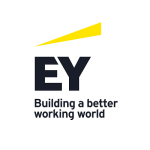Indirect audit methods (IAMs) have evolved over many years in several EU and non-EU jurisdictions to become a powerful tool used by revenue bodies in varying degrees. They aim to determine the tax liability through an analysis of financial transactions, using information from sources other than tax returns, and official books and records.
The implementation of IAMs was introduced to the Greek tax legislation in 2012, and a more coherent framework has been applied since 2014, through a combination of provisions included in the Income Tax and Procedures Code. Until recently, the Independent Authority for Public Revenue (IAPR) had issued instructions on the application of only three of these methods when auditing individuals (namely, the ‘source and application of funds’, the ‘net worth’ and the ‘bank deposits and cash expenditures’ methods). The methods, mainly the latter route, appear to be widely used in audits of individuals, giving rise to substantial controversy and litigation.
In January 2020, the IAPR issued one decision and two circulars on the application of the ‘mark-up’ and the ‘unit and volume’ methods (namely, A.1008/2020, E.2015/2020 and E.2016/2020), thus enabling their deployment in audits of legal entities.
Scope of application and prerequisites
In accordance with the guidelines, the ‘mark-up’ and ‘unit and volume methods’ may be used for auditing legal entities of any type and individuals engaged in business activities for tax years commencing as of January 1 2014. The application of the appropriate IAM may be decided at any stage of the tax audit, following approval by the director of the respective tax office or audit centre, while different IAMs may be used for different branches of activity of the same enterprise.
Furthermore, the application of IAMs in any given case should be adequately justified in the relevant audit report, by reference to the applicable provisions. It is worth noting that any adjustment of the gross revenue of the audited person for income tax purposes is taken into consideration for the assessment of other taxes, duties, and contributions, based on the applicable legislation.
As far as income tax is concerned, the application of IAMs is allowed in either of the following circumstances:
When accounting books are not maintained, or financial statements are not drafted in accordance with the law on accounting principles;
When tax records, or other relevant supporting documents, are not drafted pursuant to the Tax Procedures Code; or
In case the taxpayer refuses to submit accounting or tax records to the tax administration, upon a relevant request.
In terms of mechanics, in the context of the ‘mark-up’ method, the tax inspectors determine ratios or indices (mainly by reference to the actual gross profit margin), which qualify as reliable based on generally accepted audit principles and methodologies. Nevertheless, the main source of information is still the audited business itself, without excluding third-party information, where deemed necessary. For example, the method appears suitable in the case of a business deliberately holding inaccurate bookkeeping, assuming the cost of goods sold is known to the tax inspector, whereas the gross profit margin may be determined by reference to sales of similar products, pricing lists, etc.
The ‘unit and volume’ method (which is a variation of the ‘mark-up’ method) would be applicable in circumstances where the price of units sold by the enterprise is known, whereas the volume of business may be determined (e.g. the ratio of packaging material to food portions, taking into account reasonable loss of material and other similar parameters).
Specific examples for the application of both methods are illustrated in the guidelines issued.
In conclusion, the application of IAMs will ultimately be considered and judged upon by the Greek Administrative courts. Inevitably, they will once again need to strike a balance between enhancing tax compliance and safeguarding paramount principles of Greek tax law, such as the principles of proportionality and sound administration.
In simple terms, a fair expectation would be that IAMs are invoked and applied as a last resort in case of deliberate tax evasion, where any other, more straightforward approach, has failed.
Konstantina Galli
T: +30 210 2886 355
E: konstantina.galli@gr.ey.com












